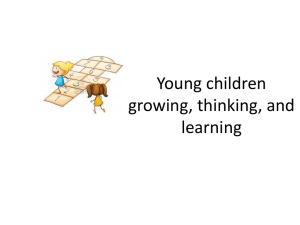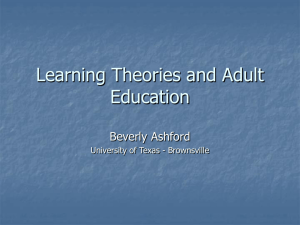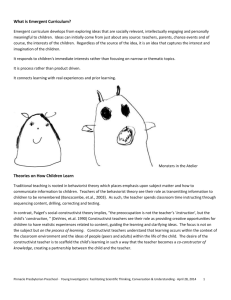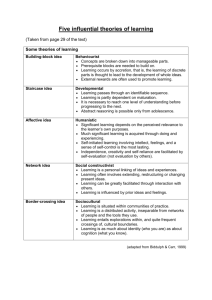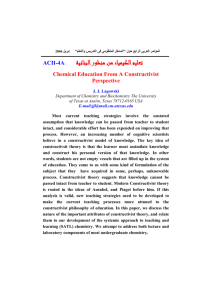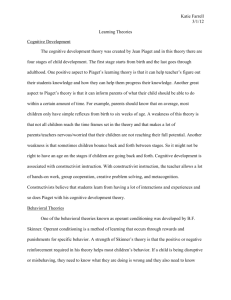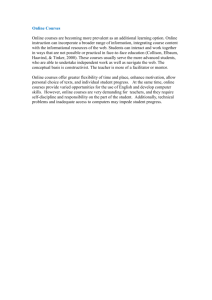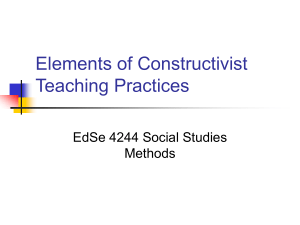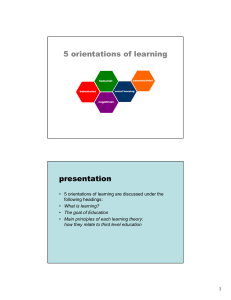View Power Point Presentation
advertisement
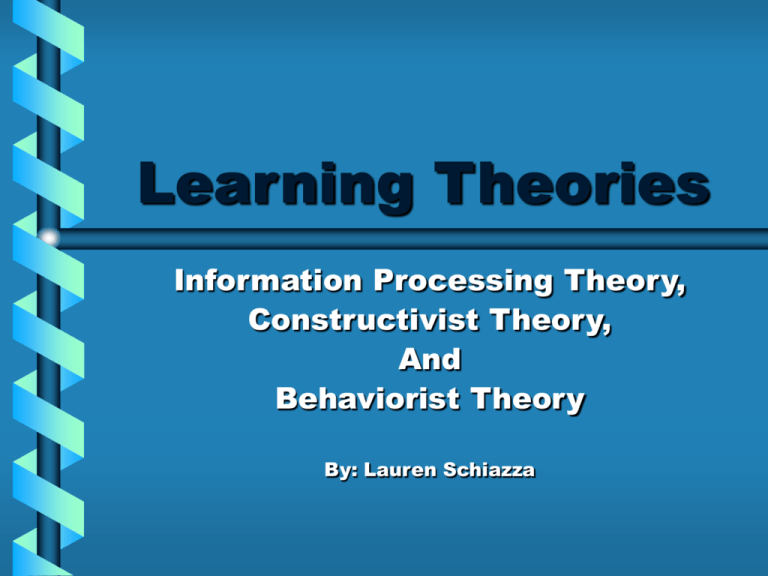
Learning Theories Information Processing Theory, Constructivist Theory, And Behaviorist Theory By: Lauren Schiazza Learning Theories Information Processing Theory Constructivist Theory Behaviorist Theory People learn by chunking information, rehearsal, organization, elaborating, imagery, and schema Learners construct new ideas based off past/current knowledge and experiences Learn by cause and effect Use computers and inspiration software to help students outline and make concept maps Computers to foster creativity, visual formats, multi-media for projects Use educational software to find weaknesses, develop prerequisite skills, and get immediate feedback Can be modified by reinforcement Information Processing Theory • By: George A. Miller • Chunking – Short term memory can only hold 5-9 chunks of information • Test-Operate-Test-Exit – Operation is performed to achieve goal – Planning is important Constructivist Theory • By: J. Bruner • Instruction – All knowledge comes from experiences in the world – Must be structured – Must be designed to fill gaps • Learning occurs when students construct the building blocks for learning in meaningful situations Behaviorist Theory • By: B.F.Skinner • Changes in behavior are from individual responses to events that occur in the environment • Reinforcement – Positive reinforcement • Strengthens desired response • Good grades, verbal praise – Negative reinforcement • Results in increased frequency when withdrawn • Annoying light in car when seat belt is not on Technologies • Technologies can increase the learning theories by: – Constructivist Theory • • • • • • • • problem oriented visual formats/ mental models rich, complex environments real-world like situations cooperative learning exploration teams/ groups authentic assessment/ demonstrate knowledge in more realistic manner • Portfolios Technologies • Constructivist Technologies – – – – computers to foster creativity problem solving/ multi media software(how they think) visual formats ( more meaningful learning) multi media student created presentations (power point), cooperative – sound images and video • Behaviorism and Information Processing Theories – Directed instruction/ teacher centered • • • • educational software/ identify weakness drill and practice develop prerequisite skills supplement instruction for highly motivated/ watch videos/ tech projects • assess learners/ time saving/ assess mastery • multi media/ content/ video/ graphics What to use? • Great Technologies to use in the classroom – – – – – – Computers Power point Inspiration software Internet Dreamweaver Multi-media Hyperlinks and Resources • http://tip.psychology.org/miller.ht ml • http://tip.psychology.org/bruner.h tml • http://tip.psychology.org/skinner. html
